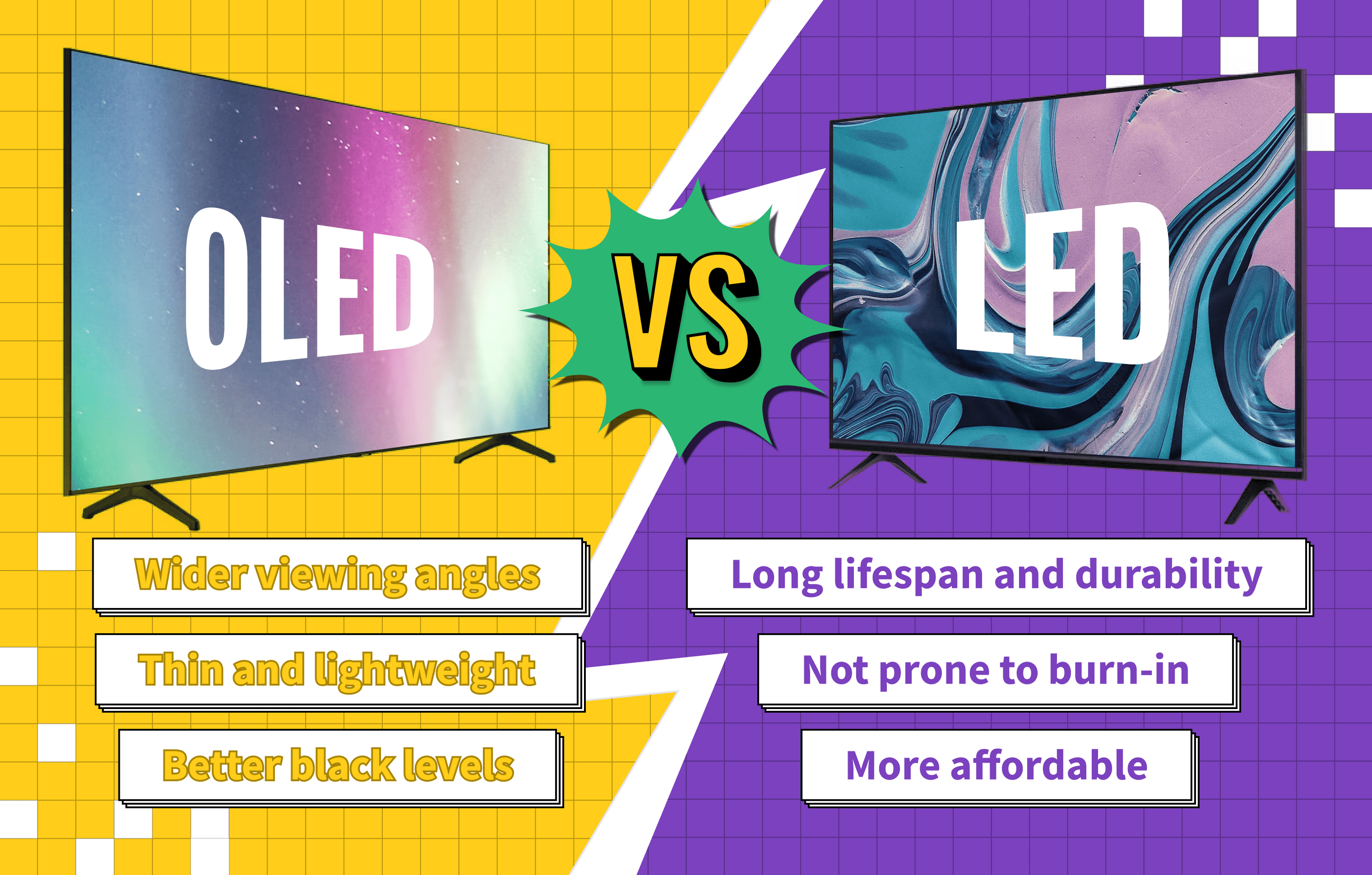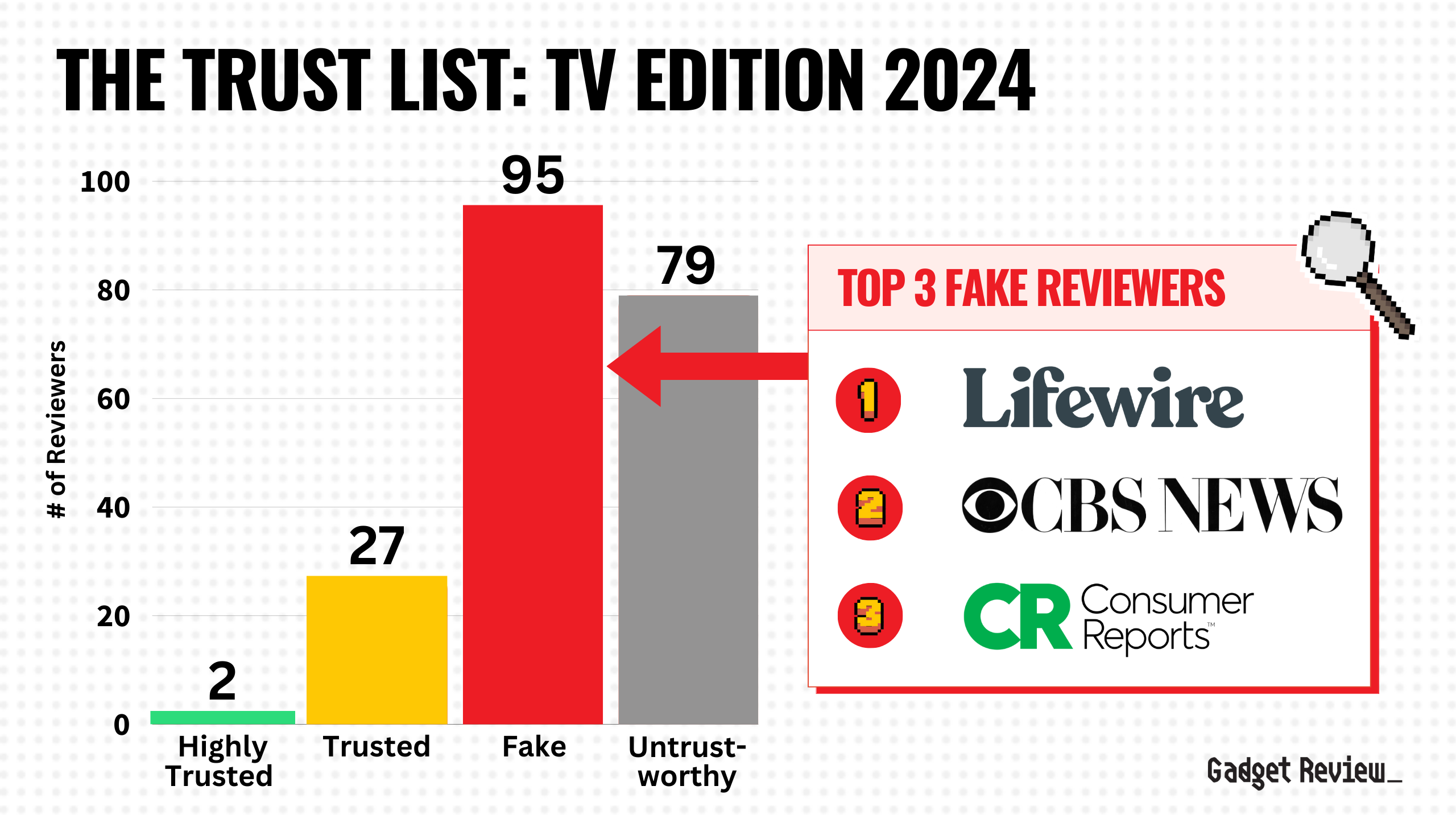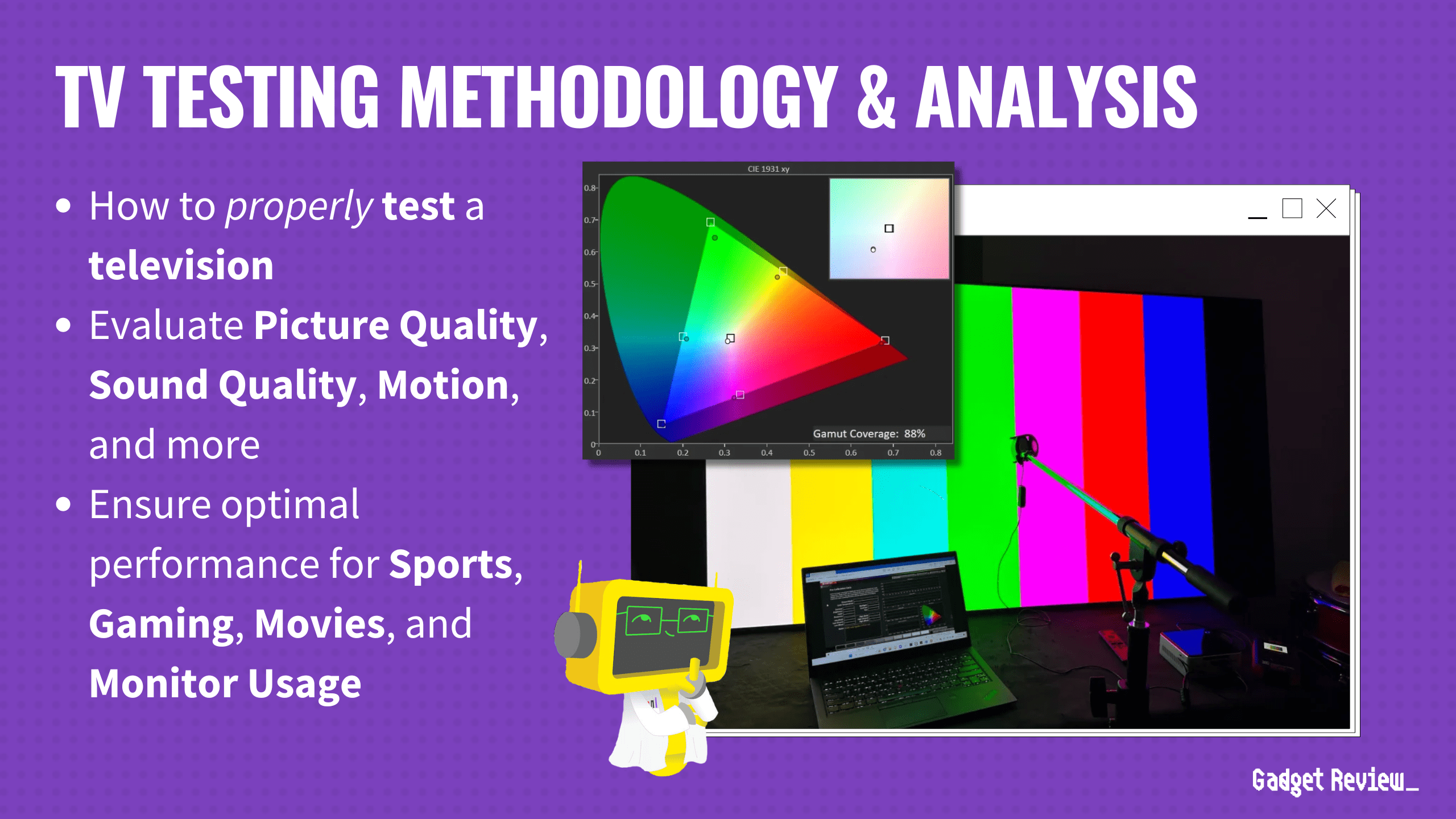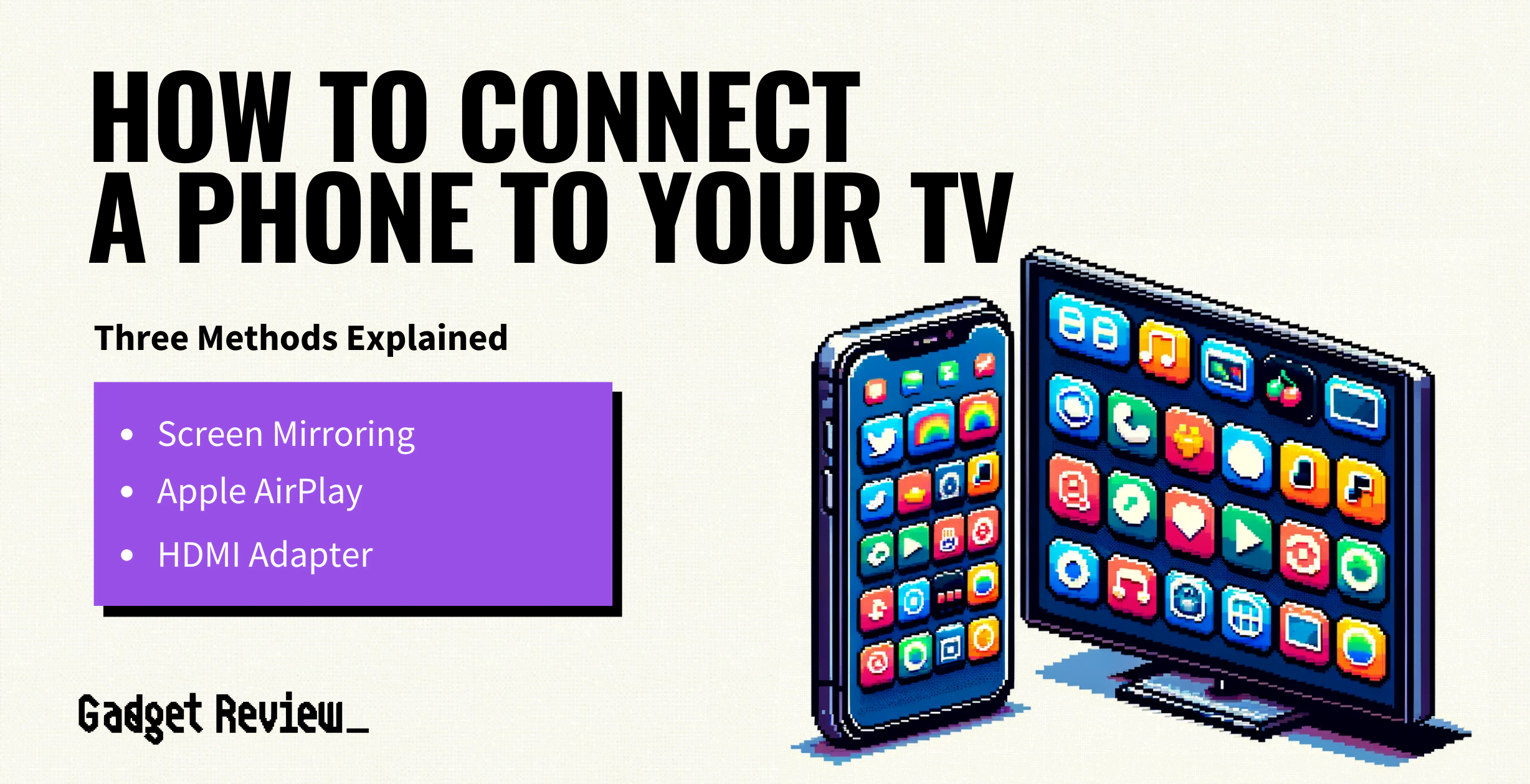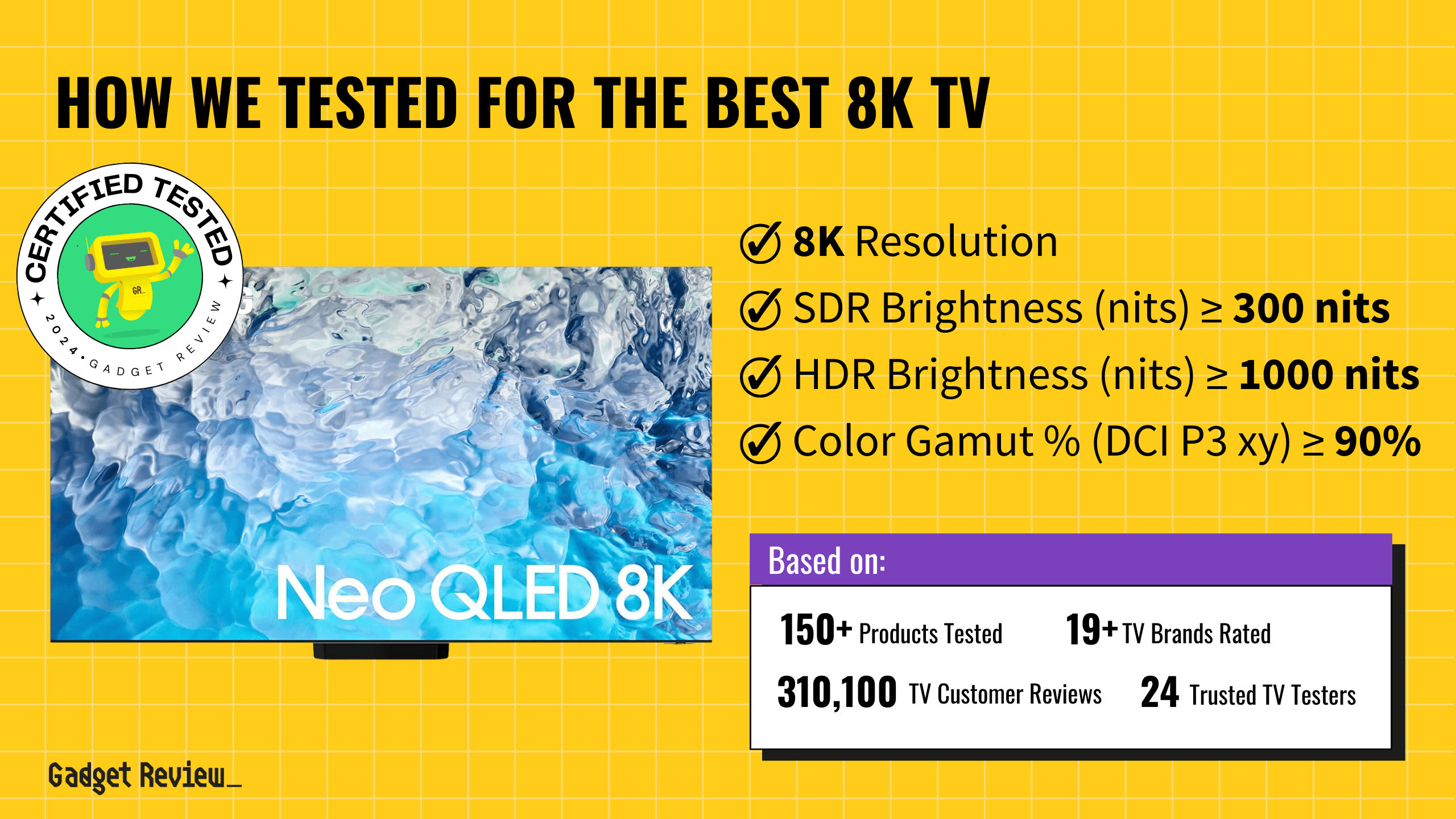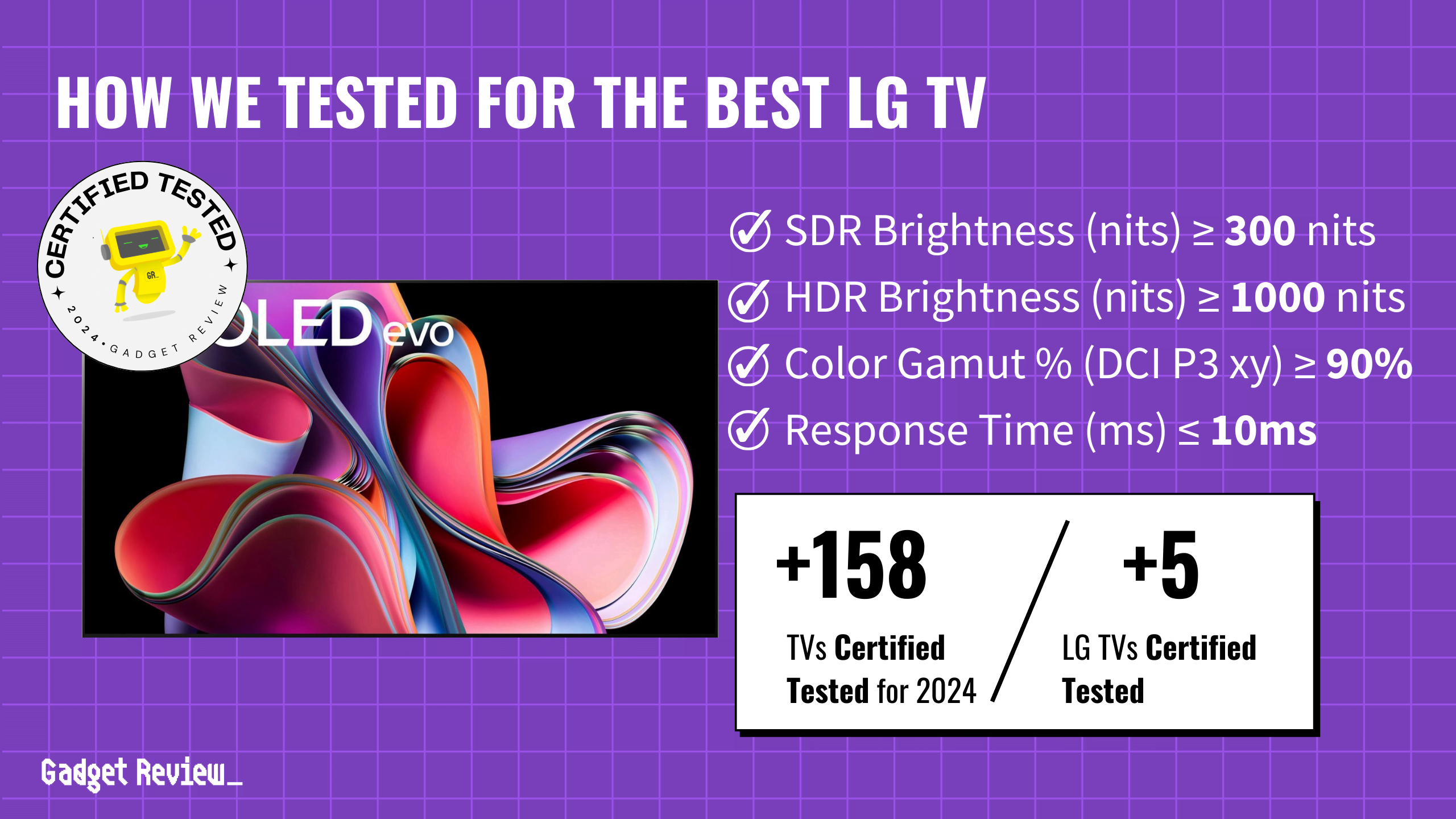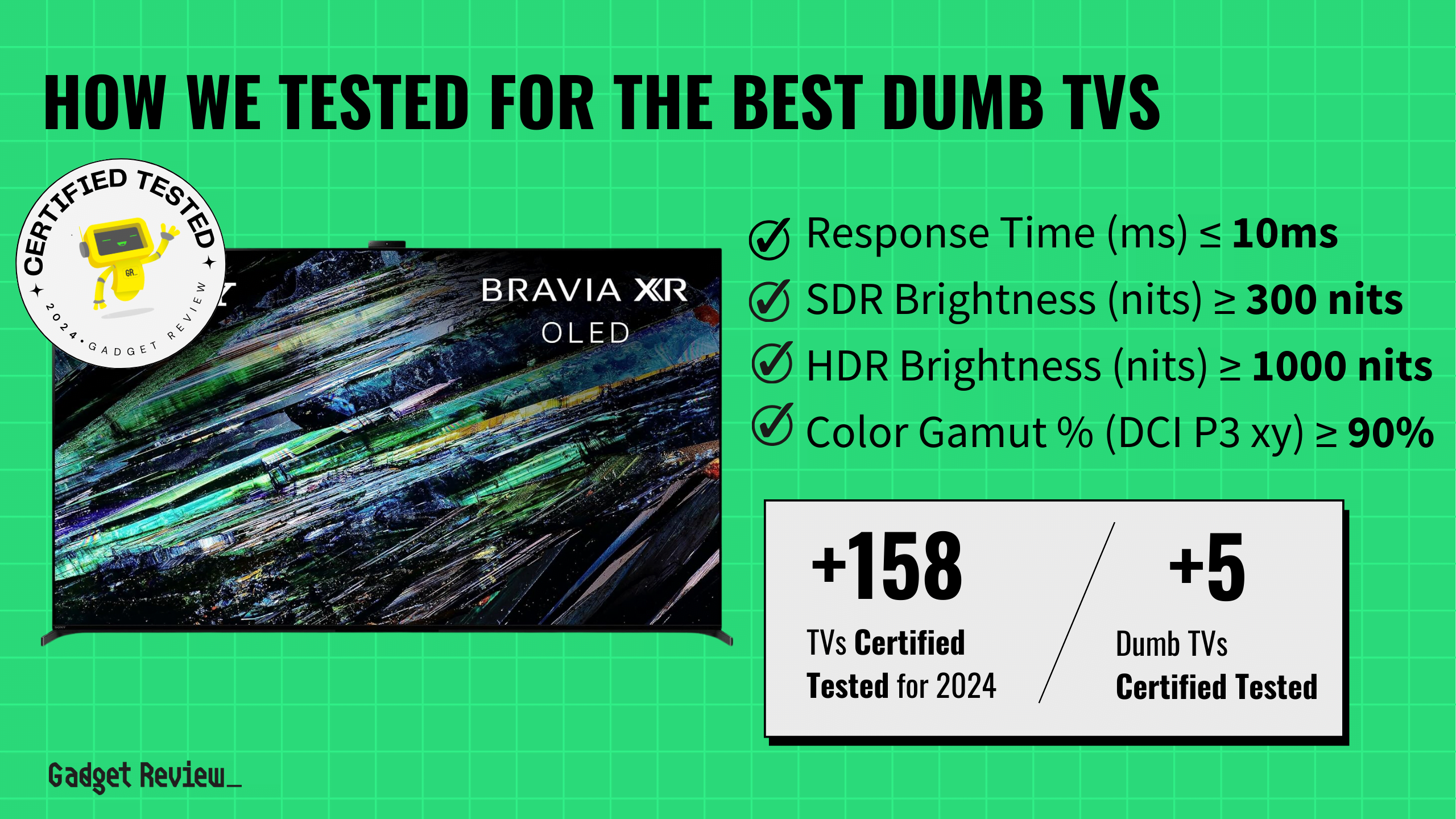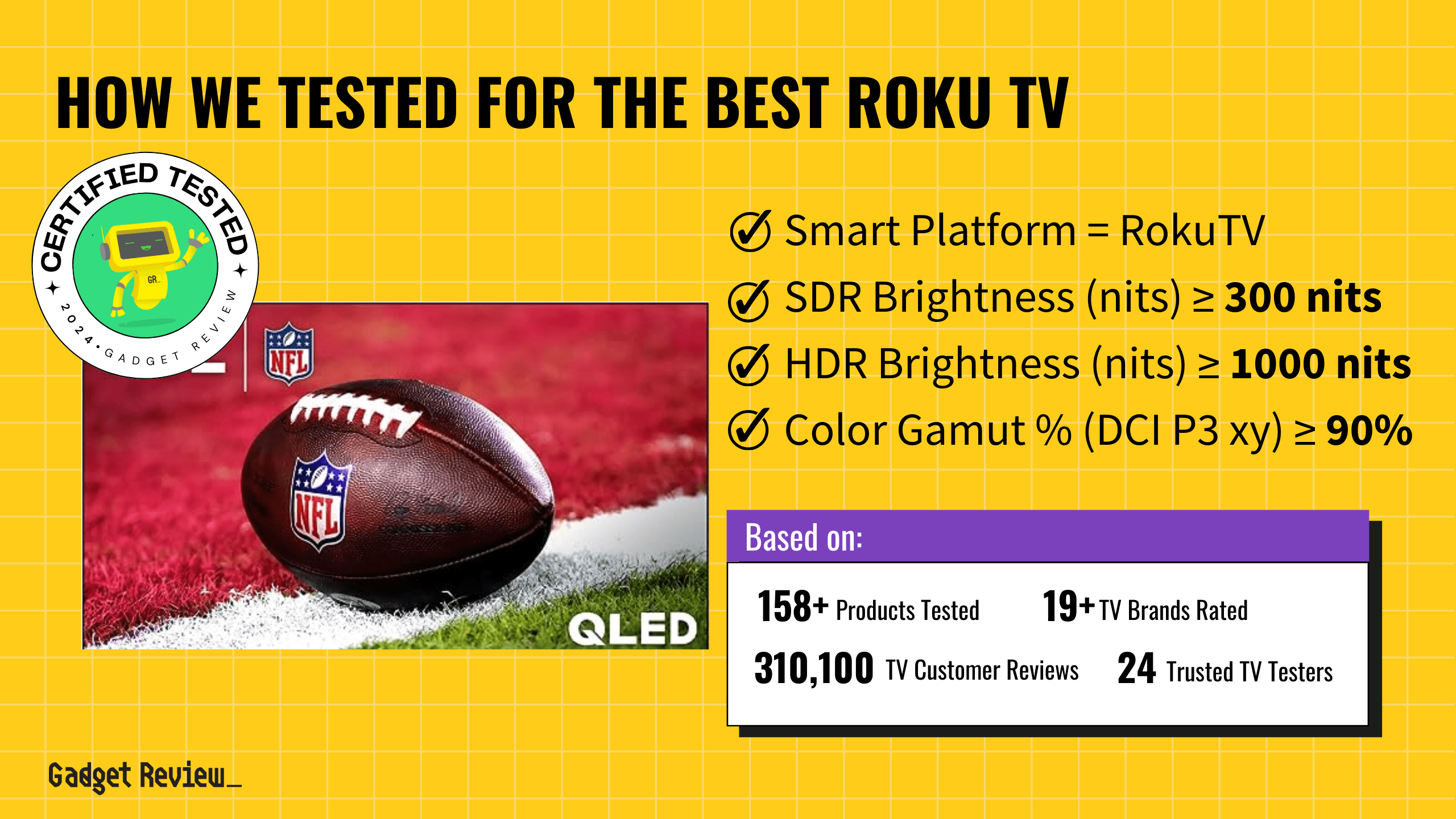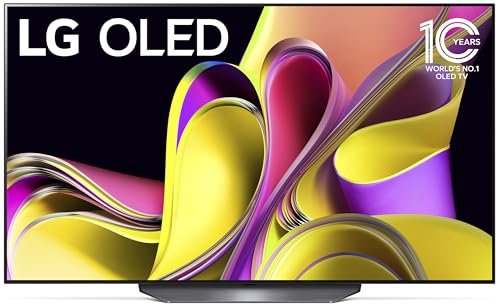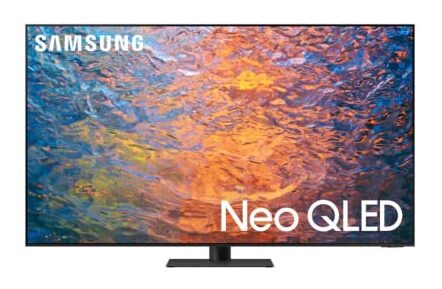Let’s get right to the point: OLED and LED are two very distinct technologies that are used in TV and other displays. However, OLED TVs are the next evolution of LED TVs.
When shopping for the best TVs, you will be confronted with many terms and abbreviations that may confusion, like OLED and LED. While you will notice they both have LED in the name, how they use this technology is completely different. We will explain the differences in these technologies below.
Key Takeaways_
- LED refers to the backlight that helps brighten up a liquid crystal display.
- OLED TVs don’t require a backlight, allowing for a more dynamic range of lighting and giving incredible picture quality to viewers.
- The biggest difference between the two is in how they work, but the price is also a big factor to consider.
Terminology
It is always easier to understand something if you know what the terms mean, so let’s define these terms and abbreviations.
It is essential to know that LED is a type of backlighting for LCD panels.
LCD (Liquid Crystal Display) is a panel technology where a solution of liquid crystals is used in between layers of glass or plastic that uses a backlight source to create the lighting used to see the images on your screen.
LED (Light Emitting Diode) – These TVs use small LEDs to provide backlight to an LCD panel. There are three common LED configurations:
- Edge-Lit – LEDs are positioned on the edges of the screen. These TVs lack uniform brightness and are the most affordable of the configurations
- Direct-Lit – LEDs are positioned behind the LCD panel, providing improved uniform brightness, contrast, and black levels and, thus, a better overall image.
- Full-Array – Similar to direct-lit but with more LEDs and is divided into zones, providing greater uniform brightness, better contrast, and deeper black levels for the best image quality of the three configurations.
OLED (Organic Light Emitting Diodes) – These TVs use organic compounds that, when an electric current is applied, emit light.
- Each pixel is one of these organic LEDs that emit their own light, removing the need for LCD panels altogether. As such, each pixel can be individually controlled.
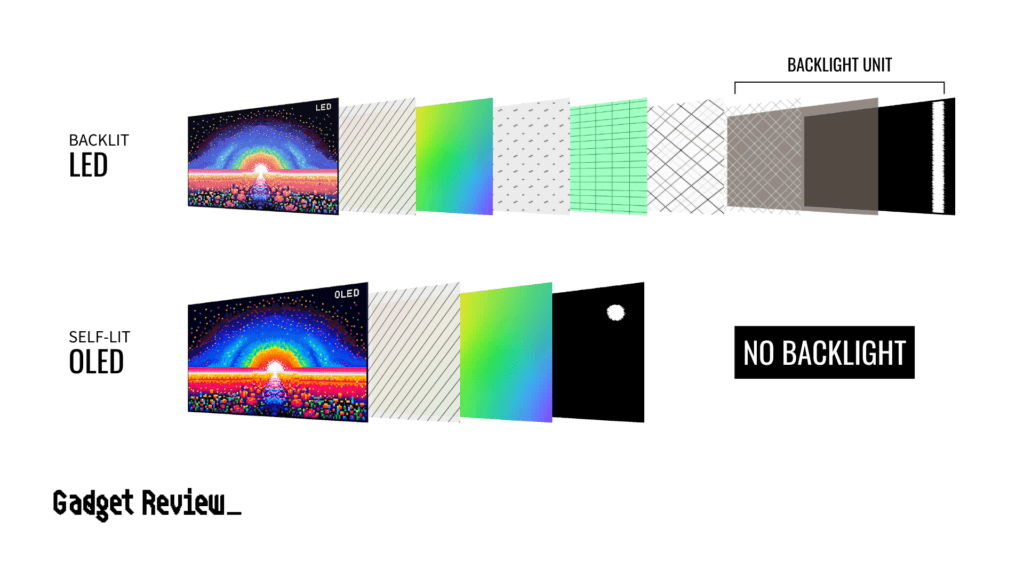
What is the difference between OLED and LED?
So, when it comes to an OLED vs. LED, which is better? It should come as no surprise that OLED technology is superior to LED. As OLED is a newer technology, it enhances the older technology, and thus, it costs more as well. However, if you want the best possible image quality, it is worth the extra money as long as it fits into your budget.
As LED TVs are an advancement in the backlighting for LCD TVs; you can check out our page on LED vs LCD TVs for a comparison of these types.
In-depth comparison: OLED vs. LED
The table below compares some of the features and traits between the two TV types to help you decide which option will work best for you.
| Feature | OLED (Organic Light-Emitting Diode) | LED (Light Emitting Diode) |
|---|---|---|
| Technology | Uses organic compounds to emit light at the pixel level | Uses LEDs for backlighting an LCD (Liquid Crystal Display) panel |
| Image Quality | Deep blacks, infinite contrast ratios, vibrant colors, and wide viewing angles | Not as deep blacks, lower contrast, and more limited viewing angles |
| Energy Efficiency | More energy-efficient | Less energy efficient |
| Lifespan | 43,800-100,000 hours | 100,000 hours |
| Price | – Entry-Level: Not commonly available – Mid-Range: $1,500 – $3,000 – High-End: $3,000 and up | – Entry-Level: $200 – $500 – Mid-Range: $500 – $1,500 – High-End: $1,500 – $3,000 |
Which TV type is better?
For an immersive experience, OLED TVs can’t be beat by LED displays. Additionally, if you are a gamer, you will like that you can’t go wrong with either TV Type.
LED TVs can offer good image quality, fast response times, and low input lag. OLED just does those things better, and the superior contrast ratio can really help with more immersive visuals.
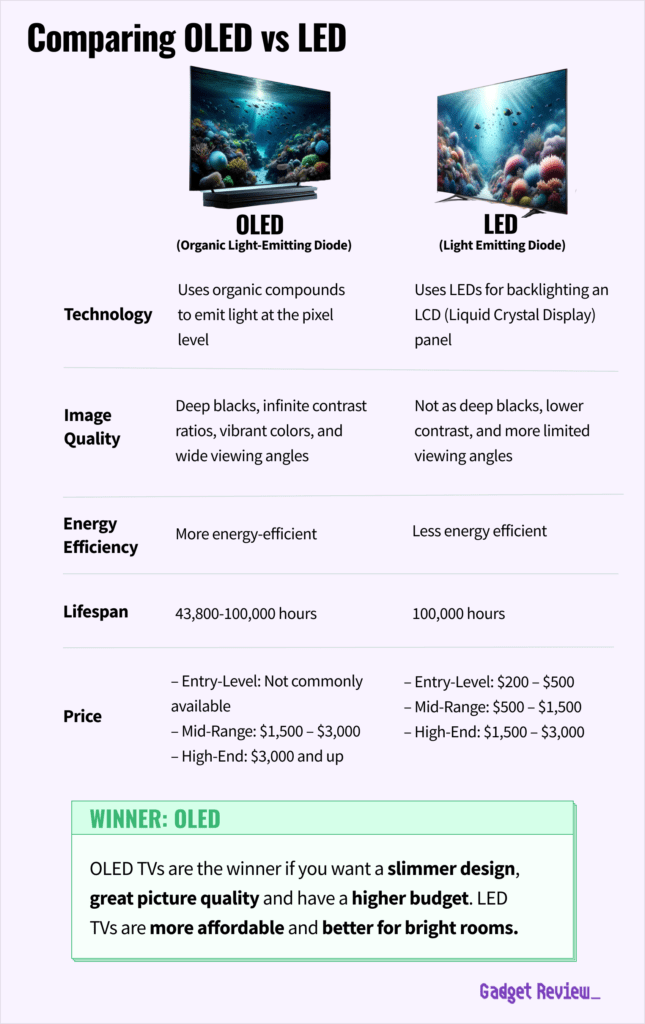
However, these OLED models are still quite expensive for the average consumer. As such, the majority of homes with a TV will most likely have an LED-backlit TV.
It should be noted that manufacturers have developed advancements in LED technology to improve picture quality and contrast closer to OLED quality. These models will come at an increased price compared to regular LED models, and OLED models are still better overall, however.
- QLED (Quantum Dot LED) – Popular from Samsung, quantum dots help enhance the TV’s backlighting for better color accuracy and brightness. The size of the dots is important for accurate shades.
- Quantum dots are tiny semiconductor particles that emit specific colors when exposed to light.
- Nano Cell – Popular from LG, uses a nanoscale filtering layer in front of the LCD to help with more accurate colors.
STAT: LG claims its OLED panels only generate 34% blue light versus LED TV’s 64%. (source)
There is no concrete answer to which is better for you because budget plays an important role. The display technology of an OLED TV is superior in most cases. However, they can be on the pricey side.
On the other hand, LED-backlit LCD TVs still reign supreme in popularity due to their affordability and accessibility.


